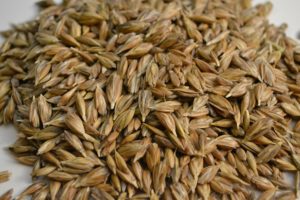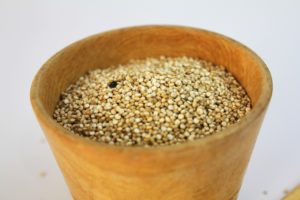Have you heard of “ancient grains”? Amaranth, einkorn wheat, farro (emmer wheat), Kamut (Khorasan wheat), millet, quinoa, sorghum, spelt, and teff, to name a few. If not, you likely will in the future as they have been awarded the designation of being one of the hottest food trends of  2016. The term doesn’t have any biological, botanical, or nutritional meaning, but rather classifies a widely debated group of grain and grain-like products.
2016. The term doesn’t have any biological, botanical, or nutritional meaning, but rather classifies a widely debated group of grain and grain-like products.
According to Oldways Whole Grains Council and Nutrition Exchange, based in Boston, ancient grains are those that have remained unchanged over the last several hundred years, possibly even thousands of years. This category of food products includes true grains, which are by definition hard seeds from a grass, like teff. Interestingly, it also includes pseudo grains, or seeds from non-grasses, such as quinoa, and other seeds, such as amaranth. Some rice products are at times included in this designation as well.
The Mayo Clinic notes that ancient grains are growing in popularity for a variety of reasons. Among them, “Chefs use ancient grains to bring different textures, colors and flavors to dishes. Consumers are looking for “health foods” and some are looking for alternatives to wheat or gluten-containing grains.”
The nutritional benefits depend upon the particular grain; however most ancient grains are whole grains, meaning they are packed with fiber and energy in the form of complex carbohydrates. Most are higher in protein then their cultivated relatives and many con tain phytochemicals, B vitamins, vitamin E, magnesium, and iron. This grouping contains a number of non-wheat grains, which are gluten free.
tain phytochemicals, B vitamins, vitamin E, magnesium, and iron. This grouping contains a number of non-wheat grains, which are gluten free.
Don’t be intimidated by ancient grains. Many are easy to cook and can be incorporated into foods in place of rice, stuffing, and other starchy sides. Ground products, particularly ancient wheats like emmer, Kamut (Khorasan wheat), and farro, can be used in place of wheat in a variety of baked goods. For tried and true recipe ideas and more information about individual grains, visit the Whole Grains Council.

